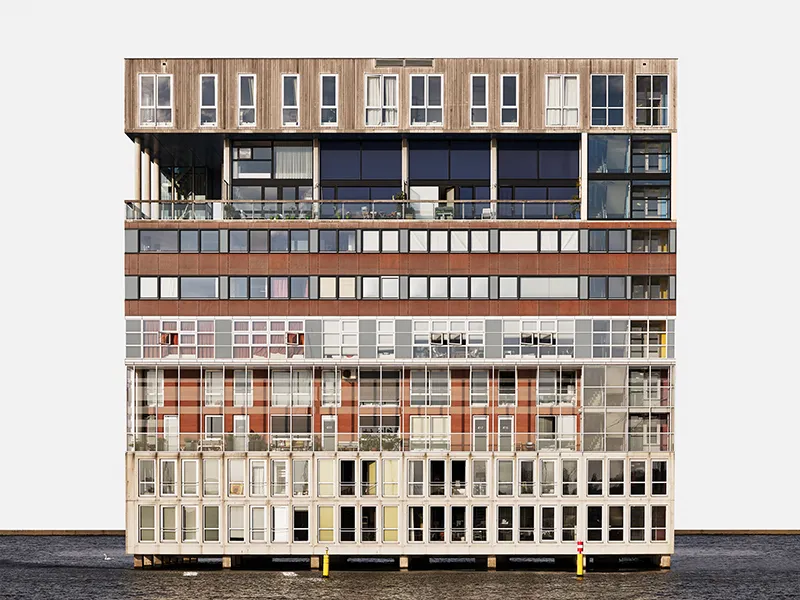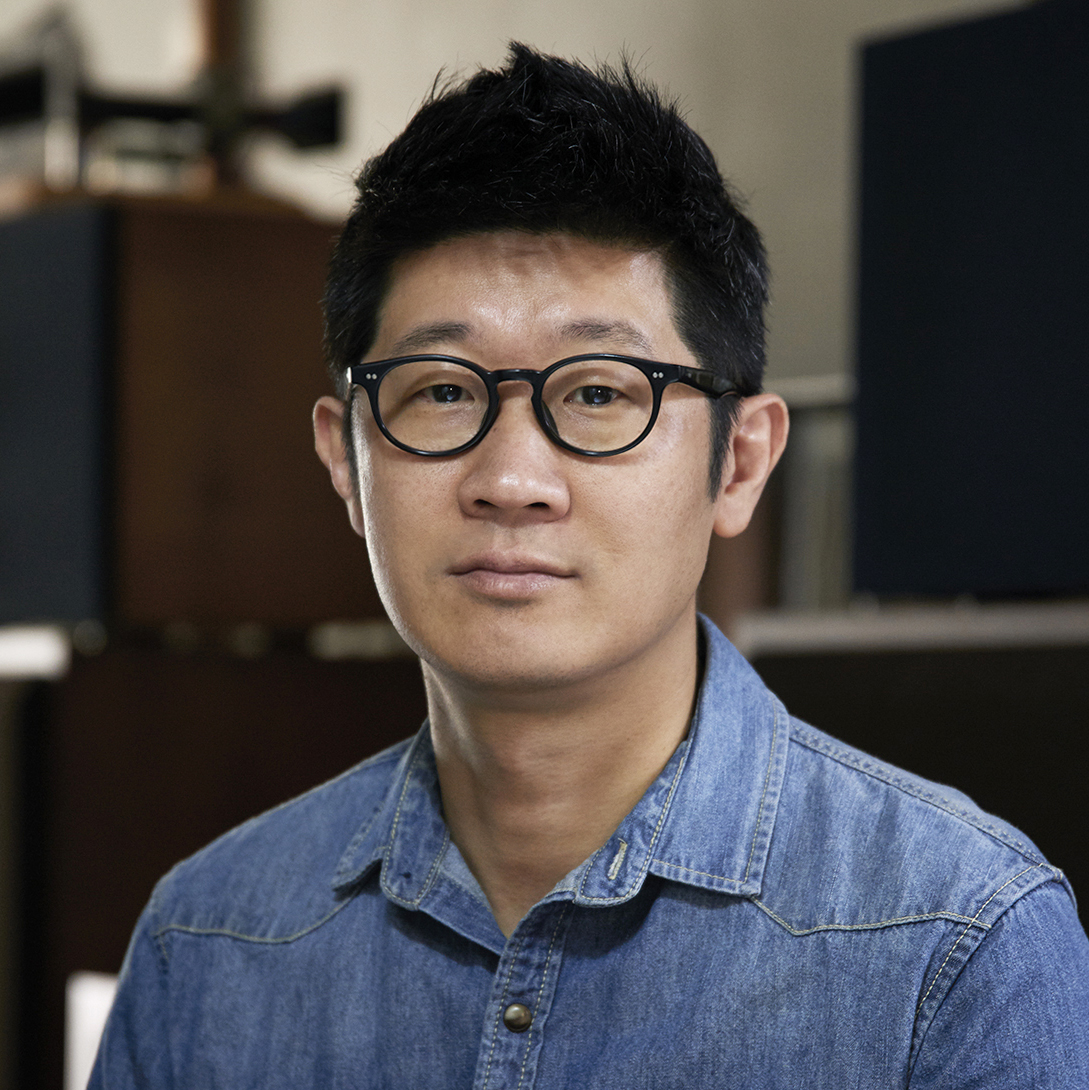Park Chanmin (b. 1970) has explored the
relationship between the structure of urban spaces and the people living within
them through photography. The artist observes how, despite their apparent
differences, the buildings that fill the city ultimately form a similar concrete
jungle. Likewise, while urban dwellers live according to their individual
personalities, their identities are often concealed within the masses, becoming
blurred.
Park focuses on the relationship where the
environment affects the people living in it, while the people, in turn, alter
their surroundings. He captures the urban environment with a contemplative
approach, reflecting this dynamic interaction.

Park Chanmin, Intimate City 01, 2008 ©Park Chanmin
Park
Chanmin's first series on urban spaces, Intimate City
(2007-2009), features black-and-white photographs of cityscapes viewed from a
distance. The densely packed buildings in his images appear as one large,
indistinct mass, obscured by a hazy atmosphere.
He
used digital techniques to remove the names of apartment buildings, further
emphasizing the uniformity and anonymity of the urban environment. The
black-and-white treatment of the photographs heightened this monotonous
portrayal of the city.

Park Chanmin, Untitled; The Level of Deception 01, 2012 ©Park Chanmin
From 2012 to 2014, Park worked on the
series Untitled; The Level of Deception, where he expanded
beyond Korean urban environments to capture buildings in Europe, including the
UK and the Netherlands. By digitally removing the backgrounds of these
buildings, he rendered their purposes and contexts ambiguous, creating an
unreal atmosphere.
These works raise questions about how
we perceive space and challenge the notion of photography as a purely factual
medium.
 Park Chanmin,
BL212372259126385023, 2012 ©Park Chanmin
Park Chanmin,
BL212372259126385023, 2012 ©Park ChanminIn 2010, Park Chanmin introduced the Blocks
series, focusing on apartment buildings in Korea and communal housing in
Scotland. As in his previous series, he used post-processing techniques to
erase the details of the buildings, obscuring their identities and transforming
them into massive, indistinct blocks.
In Blocks, the
reduced distance between the camera and the buildings emphasizes their
presence. Park removed windows, doors, balconies, traces of daily life, signs,
advertisements, and nameplates, leaving only the uniform concrete surfaces.

Park Chanmin, BL105565103104512, 2010 ©Park Chanmin
Park Chanmin developed the Blocks series with the idea that while apartment buildings may appear to shape their identities and value through branding, they are ultimately just immense concrete blocks. By removing the passageways between interior and exterior, Park presents these buildings as uniform masses, symbolizing the standardized, communication-lacking lives of the urban dwellers inhabiting them.

Park Chanmin, Urbanscape_042, 2012 ©Park Chanmin
After this, Park Chanmin's interest expanded to various urban environments, leading to the Urbanscape; Surrounded by Space (2012-) series, which captured urbanscapes from places like Seoul, Busan, Daegu, Hong Kong, and Macau. These works portray dense clusters of buildings, with their facades overlapping and enclosing each other. Although the backgrounds vary across different cities, the images emphasize the lines and surfaces within the urban spaces, creating what appears to be geometric patterns rather than showcasing the unique characteristics of each region.

Park Chanmin, Urbanscape_002, 2014 ©Park Chanmin
As Park observed the coexistence of residential, commercial, and sometimes industrial spaces in contemporary cities, he reflected on how these spaces we create increasingly surround and enclose us. Like conducting case studies, he continued this series by documenting and arranging images of cities to reveal the common structural patterns shared across diverse urban environments.
 Park Chanmin,
CTS 04_HKG, 2016 ©Park Chanmin
Park Chanmin,
CTS 04_HKG, 2016 ©Park ChanminPark
Chanmin's recent Cities series, similar to his previous
Blocks series, captures urbanscapes with their architectural
details meticulously removed. While Blocks focused on
buildings from a close-up perspective, emphasizing the architecture itself,
Cities illuminates vast urban landscapes from a distant
viewpoint, almost like an aerial map.
Rather
than highlighting the differences and unique qualities of cities like Hong Kong
and Osaka, Park concentrated on the structural similarities of urban spaces. To
achieve this, he simplified detailed elements, allowing the overall structure
to stand out, resembling dioramas or aerial views, where the densely packed
urban forms are prominently displayed.

Park Chanmin, CTS 09_Tokyo, 2016 ©Park Chanmin
As Park
Chanmin observed cities across different countries, he came to believe that,
despite their distinct names and histories, many cities ultimately evolve in
similar forms. This phenomenon may be a result of humanity’s desires converging
beyond cultural and regional differences, or perhaps we have always been
striving for the same thing.
Park’s
perspective on these cities does not reveal any criticism or pessimism.
Instead, his work embarks on a journey to explore the true nature and structure
of modern cities through the medium of photography, capturing the essence of
urban spaces and the lives of those who inhabit them.

Park Chanmin, CTS 06_Osaka, 2015 ©Park Chanmin
“In all cities, individuals can only discover the difference in their life by knowing what space is built in the city.”
 Artist Park
Chanmin ©Park Chanmin
Artist Park
Chanmin ©Park ChanminPark Chanmim graduated from Korea
University’s Department of German Literature (1997) and obtained a master’s
degree from Chung-Ang University’s Graduate School of Photography (2008). After
that, he graduated from the University of Edinburgh, UK with a Master’s degree
in Contemporary Art (2011). He held his first solo exhibition in 2008 after
being selected for a young artist support contest at Gallery Lux (Seoul, South
Korea). Up until 2022, he has had nine solo exhibitions.
He was selected as the 1st SKOPF
(KT&G Sangsangmadang Korean Photographer’s Fellowship, Korea) and won the
6th ILWOO Photography Award exhibition section (ILWOO Foundation, Korea). His
works are in collections of various museums and foundations such as The
National Museum of Modern and Contemporary Art(Gwacheon, Korea), ILWOO
Foundation, Daegu Museum of Art(Daegu, Korea), Goeun Museum of Photography,
(Busan, Korea), Seoul Museum of Art(Seoul, Korea), The Sovereig Art Foundation
(Hong Kong).




















